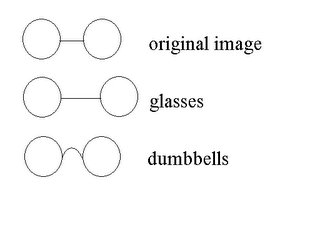
Memory is Often a Reconstruction
This demonstration proves that our memory is not necessary an accurate reflection of our past experience but rather distorted through reconstructive nature of memory. We were shown eight shapes of figures with little time for each figure to be encoded. We were told before hand that eventually, we’ll have to write out these shapes.
The figures were all so different and unrelated. After seeing all the shapes, we were given a sheet of paper with clues to help us draw the shapes. The tricky part is that the person sitting next to you will be given a different set of words and the result is that the shapes drawn tend to follow the clue even after seeing the same images. For the first image for instance, one person was given the word eyeglasses and the other person, dumbbells and the images turn out being different. This idea is massively important in faculty like law, since false testimony can be leaded by lawyer’s word trick.

0 Comments:
Post a Comment
<< Home